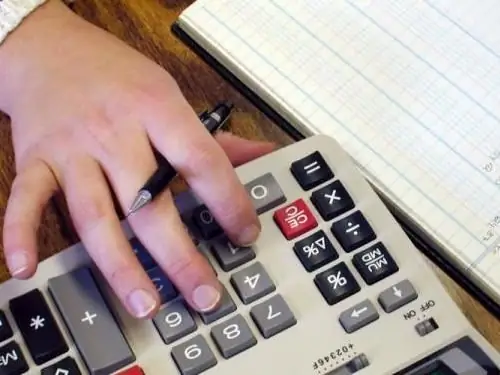- Author Isaiah Gimson [email protected].
- Public 2023-12-17 02:53.
- Last modified 2025-01-24 12:06.
The accounting system is used to collect, register and summarize information about the state of property and obligations of the organization and their changes. To group such information, accounting accounts are used, which must be maintained in accordance with established rules.

Instructions
Step 1
Develop and approve a working chart of accounts for the specifics of your organization. It should be built on the basis of a standard Chart of Accounts approved by the Ministry of Finance of the Russian Federation.
Step 2
Open sub-accounts for the convenience of keeping records for those accounts where their number is not enough. For example, you can create subaccounts to account for costs by divisions to account 20 "Main production":
- 20.1 - "Smelting shop";
- 20.2 - "Foundry", etc.
Step 3
Keep track of the organization's assets and liabilities in different accounts. Active in the standard plan are numbered from 01 to 59, passive - numbers from 80 to 99. Numbers from 60 to 79 are active-passive accounts, which, depending on the situation, can be used to account for both assets and liabilities.
Step 4
Reflect each business transaction in accounting using postings in two accounts (double entry method) based on primary documents. The transaction must necessarily contain the serial number, date of the event, the first and second accounting accounts and how they are used (income or expense), the amount of money, the number and name of the document and explanations.
Step 5
Make out any event of economic activity with one entry on the debit of one account and at the same time on the credit of another account. If the assets of the enterprise have increased (receipt on the debit of the active account), therefore, its liabilities have decreased by the same amount (expense on the credit of the passive account), and vice versa. The relationship between two accounts that occurs as a result of their use in the same transactions is called correspondence.
Step 6
To determine which accounts this or that account will interact with, use the specially developed Typical Correspondence. The total amount on a debit or credit for a certain period reflects the turnover of funds.
Step 7
Determine the balance (balance) at the end of the active account period using the formula - Ok = He + OBd-OBk, where:
- He is the balance of funds at the beginning of the period;
- OBD - debit turnover of funds for the period;
- OBK - credit turnover of funds for the period;
- Ok - the balance at the end of the period.
Calculate the balance of funds at the end of the passive account period using the formula - Ok = He + OBk-OBd. Thus, active accounts must have a debit balance, and passive ones must have a credit balance.
Step 8
Maintain the ledgers - Posting journal and General ledger. The Posting Journal records all transactions, and the General Ledger records the totals for all accounts. When maintaining a Ledger manually, set aside a separate page for each subaccount or final account. After you record each transaction in the Journal, reflect the changes in the total of the accounts involved in the general ledger. If accounting is carried out using a computer program, account balances are calculated automatically. Thus, it will be very easy to determine how much money is on a particular account.
Step 9
Make final postings as of the last date of the ended period to identify the financial result of the organization's business. Determine the balance of account 90 "Sales". If the balance at the end of the period is credit, it must be credited to account 99 “Profits and Loss”, the debit balance is transferred to the debit of account 99. After that, account 90 will be reset to zero (or closed).
Step 10
Determine the financial result of the economic activity of the organization at the end of the accounting period: if the balance on account 99 is credit - the company has made a profit, if the credit is a loss.






